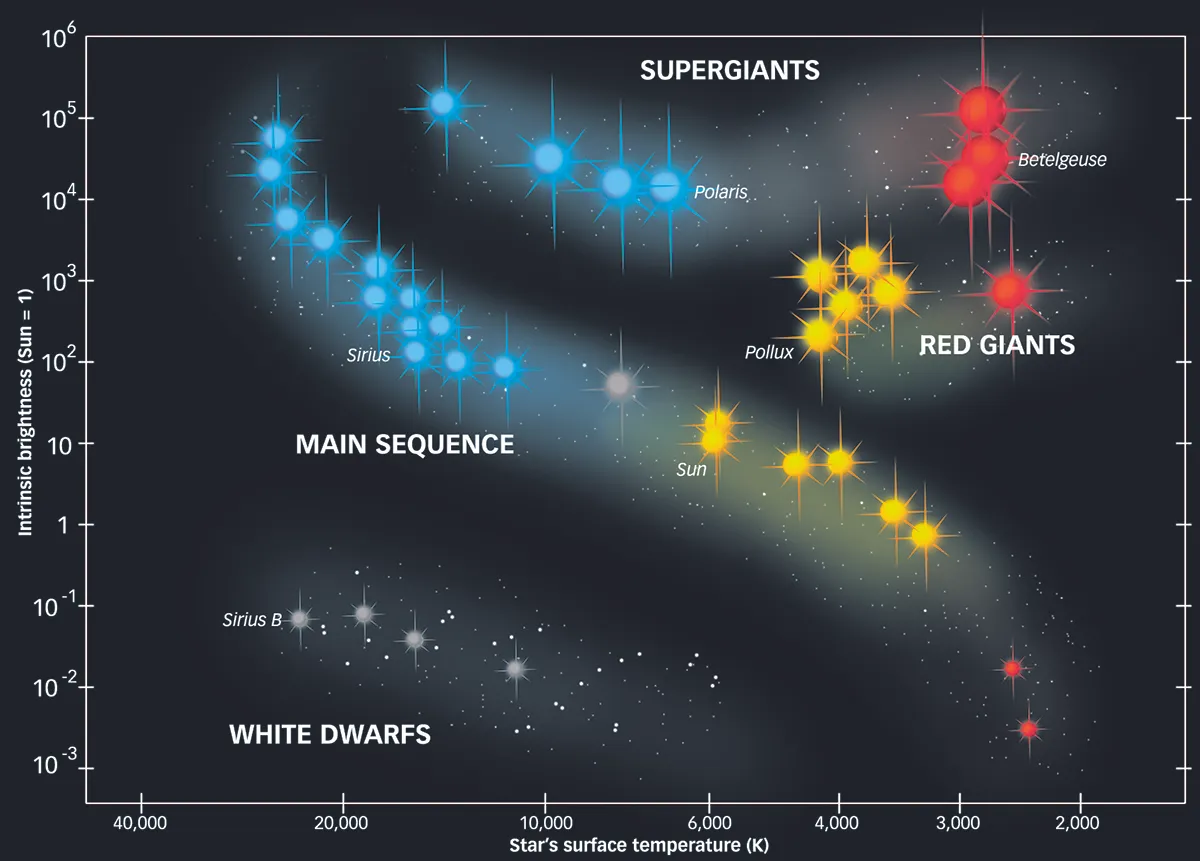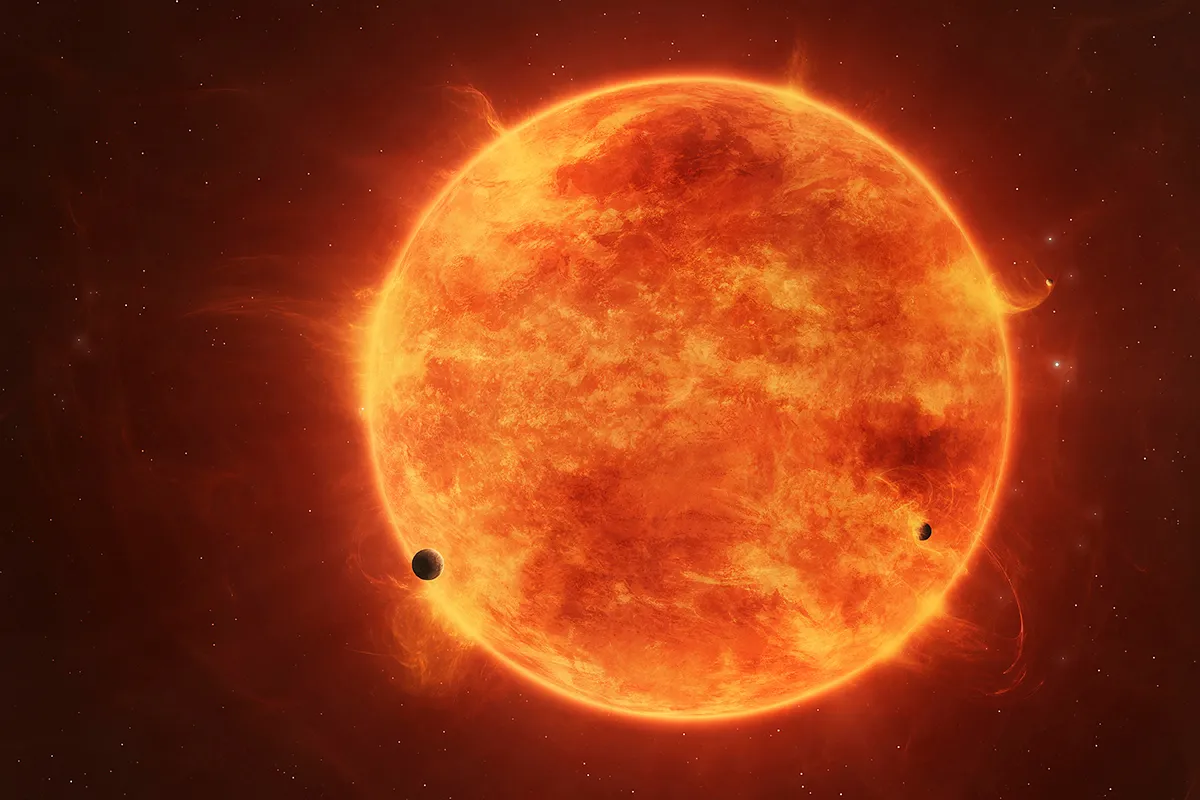The Sun is classified as a G-type main sequence star. The ‘main sequence’ part of the name refers to the fact that the Sun is at a stage in its life when the primary fuel source is the conversion of hydrogen to helium.
Stars in this phase lie on what we call the main sequence of the Hertzsprung-Russell (HR) diagram.
This diagram is a graph of stars’ absolute magnitudes versus their surface temperatures.

Stars spend the majority of their lives on the main sequence; the exact duration depends on the mass of the star.
And the main sequence is the most prominent curve on this diagram, forming a slanted ‘S’.
The main sequence is not a sharply defined line on the HR diagram, though, as several other properties, like chemical composition and age, influence the location of a star on the diagram.
A main sequence star is in a state of hydrostatic equilibrium – the internal pressure created by the nuclear reactions at the star’s core balances the inward pull of gravity, and the star is stable.
But once hydrogen burning in the core ceases, the star loses this stability and evolves away from, or off, the main sequence.
The star swells up and becomes a red giant or supergiant.

The surface temperatures of these stars are relatively cool since they are expanding, but they are very luminous, so they are plotted on the HR diagram above and to the right of the main sequence.
Eventually, the star will reach the end point of its life and become a white dwarf, neutron star or black hole – again depending on its mass.
Only white dwarfs are normally plotted on an HR diagram.
You can find out more about this subject in our guide to stellar classifications.
